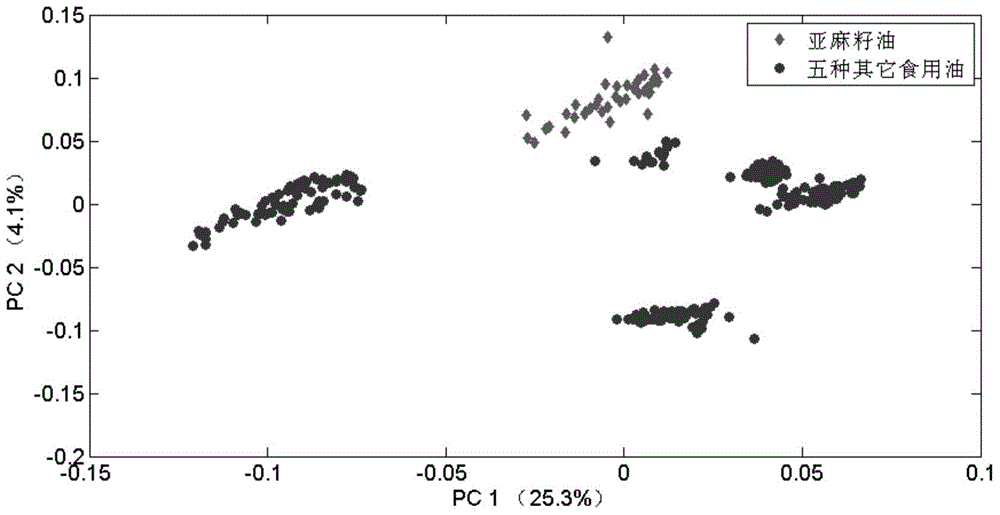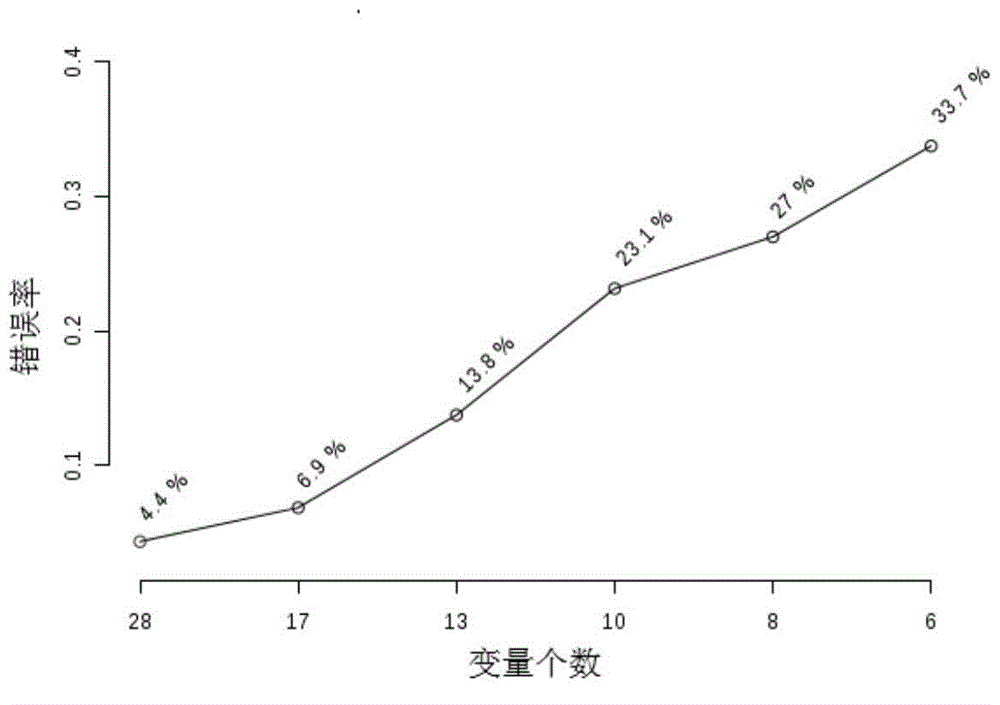Method for analyzing fatty acid composition in edible vegetable oil and true and false identification method of edible vegetable oil based on fatty acid composition
A technology of edible vegetable oil and fatty acid, which is applied in the field of food quality and safety, can solve the problems of inability to realize the authenticity and adulteration identification of edible vegetable oil, question the reliability, and low accuracy rate, etc., and achieve high sensitivity, high accuracy and good repeatability Effect
- Summary
- Abstract
- Description
- Claims
- Application Information
AI Technical Summary
Problems solved by technology
Method used
Image
Examples
Embodiment 1
[0034] The analytical method of embodiment 1 rapeseed oil fatty acid composition
[0035] Sample treatment: Accurately measure 150 μL rapeseed oil into a 10 mL stoppered polypropylene centrifuge tube; add 2 mL of petroleum ether and diethyl ether solution with a volume ratio of 1:1, 1 mL of 0.4 M KOH CH 3 OH solution is the methyl esterification reagent; vortex and oscillate for 2.5 hours of static reaction; mix and oscillate again, and after standing for 15 minutes, add 2 mL of deionized water; mix and oscillate, centrifuge at 4500 rpm for 2 minutes, and take the supernatant , and diluted 20 times, for the determination of gas chromatography-mass spectrometry;
[0036] Sample determination:
[0037]Chromatographic conditions: carrier gas: helium, carrier gas flow rate 1.2mL / min; injection volume: 1μL; split ratio 20:1; inlet temperature 220°C; heating program: initial temperature 100°C, hold for 0.2min, heat up Rate 10℃·min -1 Raise the temperature to 215°C, keep it for 0....
Embodiment 2
[0042] Embodiment 2 The fidelity and adulteration identification method of five kinds of bulk edible vegetable oils
[0043] Utilize the method for analyzing fatty acid composition in the edible vegetable oil among the embodiment 1, analyze the fatty acid composition of five kinds of bulk edible vegetable oils including soybean oil, peanut oil, rapeseed oil, sesame oil, sunflower seed oil, set up the fatty acid composition database of edible vegetable oil. Sources of samples: 17 soybeans, 75 peanuts, 57 sunflower seeds, 76 rapeseeds and 73 sesame samples, a total of 298 edible vegetable oil samples obtained by physical pressing.
[0044] Using the Monte Carlo method, one sample was randomly selected from each of the five edible vegetable oils in the database, and 300 simulated adulterated oil samples were obtained by blending in random proportions. At the same time, in order to investigate the effect of the method, 60 adulterated oils with a content of 90 mol% of one edible ve...
Embodiment 3
[0048] Embodiment 3: the analysis method of linseed oil fatty acid composition
[0049] Sample treatment: Accurately measure 150 μL of the linseed oil sample to be tested in a 10 mL polypropylene centrifuge tube with a stopper; add 2 mL of petroleum ether and diethyl ether solution with a volume ratio of 4:1, 1 mL of 0.4 M KOH CH 3 OH solution is the methyl esterification reagent; vortex and oscillate, stand still for 3 hours; mix and oscillate again, and after standing for 20 minutes, add 3 mL of deionized water; mix and oscillate, centrifuge at 4500 rpm for 2 minutes, and take the supernatant , and diluted 20 times for gas chromatography-mass spectrometry determination.
[0050] Sample determination
[0051] Chromatographic conditions: carrier gas: helium, carrier gas flow rate 1.2mL / min; injection volume: 3μL; split ratio 40:1; inlet temperature 220°C; heating program: initial temperature 100°C, hold for 0.2min, then heat Rate 10℃·min -1 Raise the temperature to 215°C, k...
PUM
 Login to view more
Login to view more Abstract
Description
Claims
Application Information
 Login to view more
Login to view more - R&D Engineer
- R&D Manager
- IP Professional
- Industry Leading Data Capabilities
- Powerful AI technology
- Patent DNA Extraction
Browse by: Latest US Patents, China's latest patents, Technical Efficacy Thesaurus, Application Domain, Technology Topic.
© 2024 PatSnap. All rights reserved.Legal|Privacy policy|Modern Slavery Act Transparency Statement|Sitemap



